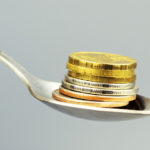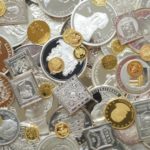Gold Is The Bedrock Of Stability For The International Monetary System

(November 26, 2019 - By Jan Nieuwenhuijs, formerly known as Koos Jansen)
European central banks are slowly preparing for plan B: gold.
It was long believed in the gold space that Western central banks are against gold, but things have changed, for quite some years now. Instead of discouraging people from buying gold, or convincing them that gold is an irrelevant asset, many of these central banks are increasingly honest about the true properties of this monetary metal. Stating that gold is the ultimate store of value, that it preserves its purchasing power through time and is a global means of payment. Such statements, combined with actions that will be discussed below, reveal that more and more central banks are preparing for plan B.
The Bundesbank (the German central bank) published a book last year named Germany’s Gold. In the introduction, written by the President of the Bundesbank Jens Weidmann, the view of this bank leaves no room for interpretation. Weidmann writes (emphasis mine):
Ask anyone in Germany what they associate with gold and, more often than not, they will say that it is synonymous with enduring value and economic prosperity.
Ask us at the Bundesbank what our gold holdings mean for us and we will tell you that, first and foremost, they make up a very large share of Germany’s reserve assets ... [and they] are a major anchor underpinning confidence in the intrinsic value of the Bundesbank’s balance sheet.
The Bundesbank produced this publication to give a detailed account, the first of its kind, of how gold has grown in importance over the course of history, first as medium of payment, later as the bedrock of stability for the international monetary system.
Central Banks and Exter’s Pyramid
What springs to mind when reading Weidmann’s statement is Exter’s Inverse Pyramid. John Exter was an American economist that in the 1960s conceived an upended pyramid of financial assets. Underneath the pyramid is gold that forms the base of most reliable value; all asset classes within the pyramid on progressively higher levels involve more risk. Exter would sometimes refer to his model as the debt pyramid; hence, he positioned gold outside of it as it’s the only asset that has no liability against it.
Gold is the hard core of our international monetary system.
“Bedrock” (Weidmann) and “hard core” (Exter) are similar, and both point to gold’s strength and what it can carry. An essential element of capitalism is investing—directly, indirectly, through bonds or equity—that involves risk. The higher the risk, the higher the return. The lower the risk, the lower the return. What falls outside of the investment realm has zero risk and no return, but provides the base that carries the debt system. This safe haven is gold, the only asset refuge that has no counterparty risk.
In the Balance of Payments and International Investment Position Manual (BPM6) drafted by the International Monetary Fund (IMF), we read:
Financial assets are economic assets that are financial instruments. Financial assets include financial claims and monetary gold held in the form of gold bullion … A financial claim is a financial instrument that has a counterpart liability. Gold bullion is not a claim and does not have a corresponding liability. It is treated as a financial asset, however, because of its special role as a means of financial exchange in international payments by monetary authorities and as a reserve asset held by monetary authorities.
The IMF considers all financial assets to have counterparty risk, except gold.
On page 112 of BPM6 the IMF lists all international reserve assets by descending order. Crowning the lineup is physical gold, followed by cash, debt securities, equity, and finally derivatives. Nearly an exact copy of Exter’s Pyramid.
Another appearance of the pyramid can be found on the website of the Dutch central bank, De Nederlandsche Bank (DNB). Since April 2019 DNB’s gold information page reads:
A bar of gold always retains its value, crisis or no crisis. This creates a sense of security.
Shares, bonds and other securities are not without risk, and prices can go down. But a bar of gold retains its value, even in times of crisis. That is why central banks, including DNB, have traditionally held considerable amounts of gold. Gold is the perfect piggy bank—it’s the anchor of trust for the financial system. If the system collapses, the gold stock can serve as a basis to build it up again. Gold bolsters confidence in the stability of the central bank’s balance sheet and creates a sense of security.
Exter’s pyramid all over. Kindly note the similarity between DNB’s and BuBa’s comments on gold providing essential confidence in their balance sheets. It goes to show these two central banks have a long history of cooperating.





